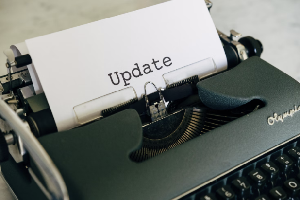by Kais Dai – Tree Technology
We are thrilled to announce the launch of the latest version of our ID document verification service, designed to provide even stronger security measures, complete integration with the IMPULSE APP and a smoother user experience.
Tree Technology’s team has been incorporating cutting-edge features and improvements to enhance the overall functionality of the service. In this blog post, we will delve into the exciting new updates, including the introduction of the Machine-Readable Zone (MRZ) code reader, advanced forgery detection enhancements, and an intuitive forgery proof image for improved explainability. Additionally, we have made significant improvements to the API response time, ensuring faster and more efficient verifications. This blog post dives into the intricacies of this advanced system, highlighting its different endpoints and the underlying components that make it a formidable tool against forgery and tampering attempts.
Ensuring reliable verification
The image quality check endpoint plays a crucial role in verifying the quality of ID document photographs. By employing detectors for blurry images, dark images, and high reflections of holograms, it tests whether the provided image meets the necessary quality standards. Depending on the results, appropriate API call responses guide users to either proceed or upload a new photo. The update about this endpoint concerns its real-time response.
Enhancing image precision
In our latest version of the ID document verification service, the traditional cropping tool has been disabled, making way for a more intuitive and user-friendly experience. A frame has been integrated within the photography capture interface in the IMPULSE APP. This frame serves as a visual guide, assisting the user in aligning their ID documents within the designated area. By doing so, the captured image automatically fits within the required dimensions for verification. This streamlined workflow eliminates the need for additional steps, reducing user effort and saving valuable time.
Extracting essential data
IMPULSE APP users can say goodbye to manual data entry during the onboarding process, as the app now intelligently extracts and populates their information directly from the MRZ code. The IMPULSE App automatically fills in the necessary data, streamlining the user experience. This new feature, the MRZ code reader, allows extracting characters corresponding to the MRZ code found in ID documents. This information includes identifiers, names, surnames, birthdates, expiry dates, and more. The endpoint also performs validations on the extracted data, enhancing the accuracy of the verification process. Through hash value comparisons, the verification module checks for potential tampering or errors, providing enhanced security.
Detecting image tampering
Copy-move forgery detection identifies regions within ID document images that have been copied and pasted. By employing SIFT-based key point extraction [1] and density-based clustering [2], potential tampering pairs are identified. The forgery proof image highlights the locations of copy-move forger. Regions where elements have been duplicated or manipulated within the same image, are marked using lines or other visual indicators. By providing visual evidence of potential tampering, public administration representatives may gain a deeper understanding of the specific areas that raise concern.

Unmasking deceptive manipulation
A new version of the imitation forgery detector has been released. It includes more information about the nationality and the document type (ID document or passport). It focuses on detecting imitations of text characteristics found in ID documents. By utilising OCR packages and one-class SVM classifiers [3], it extracts and evaluates features such as size, color, skewness, and alignment. The forgery score obtained contributes to the overall global forgery score.
The forgery proof image encloses these suspicious regions within rectangles, making them easily distinguishable. It helps the public administration representatives (in charge of the review of suspicious ID documents) to comprehend the specific elements that have triggered suspicion, empowering them to make informed decisions.
Assessing document authenticity
The global forgery scoring module calculates a comprehensive forgery score by analyzing the results of the MRZ-based, copy-move, and morphology detectors. By incorporating face recognition module output and adaptive thresholds per nationality, it provides an effective means to assess document authenticity.
The importance of explainability in AI systems
Explainability is a critical aspect of artificial intelligence systems, especially when it comes to applications that involve sensitive processes like ID document verification. It is not only a matter of trust and accountability but also a legal and compliance necessity. By providing users (PAs representatives) with a proof image that highlights suspicious elements, we empower them to verify the authenticity of the ID documents and make informed decisions. It ensures that the system’s decisions are not perceived as arbitrary or opaque, but rather because of a comprehensive analysis of potential tampering indicators.
In conclusion, this new release aims to revolutionise the way forgery detection is conducted by enhancing the ID document verification service and providing a robust visualisation tool. With the combination of advanced AI techniques with transparency, we strive to create a safer and more secure environment for identification processes, protecting individuals and organisations from the risks associated with document forgery.
[1] Teerakanok, S., & Uehara, T. (2019). Copy-move forgery detection: A state-of-the-art technical review and analysis. IEEE Access, 7, 40550-40568.
[2] Campello, R. J., Kröger, P., Sander, J., & Zimek, A. (2020). Density‐based clustering. Wiley Interdisciplinary Reviews: Data Mining and Knowledge Discovery, 10(2), e1343.
[3] Chen, Y., Zhou, X. S., & Huang, T. S. (2001). One-class SVM for learning in image retrieval. In Proceedings 2001 international conference on image processing (Cat. No. 01CH37205) (Vol. 1, pp. 34-37). IEEE.
